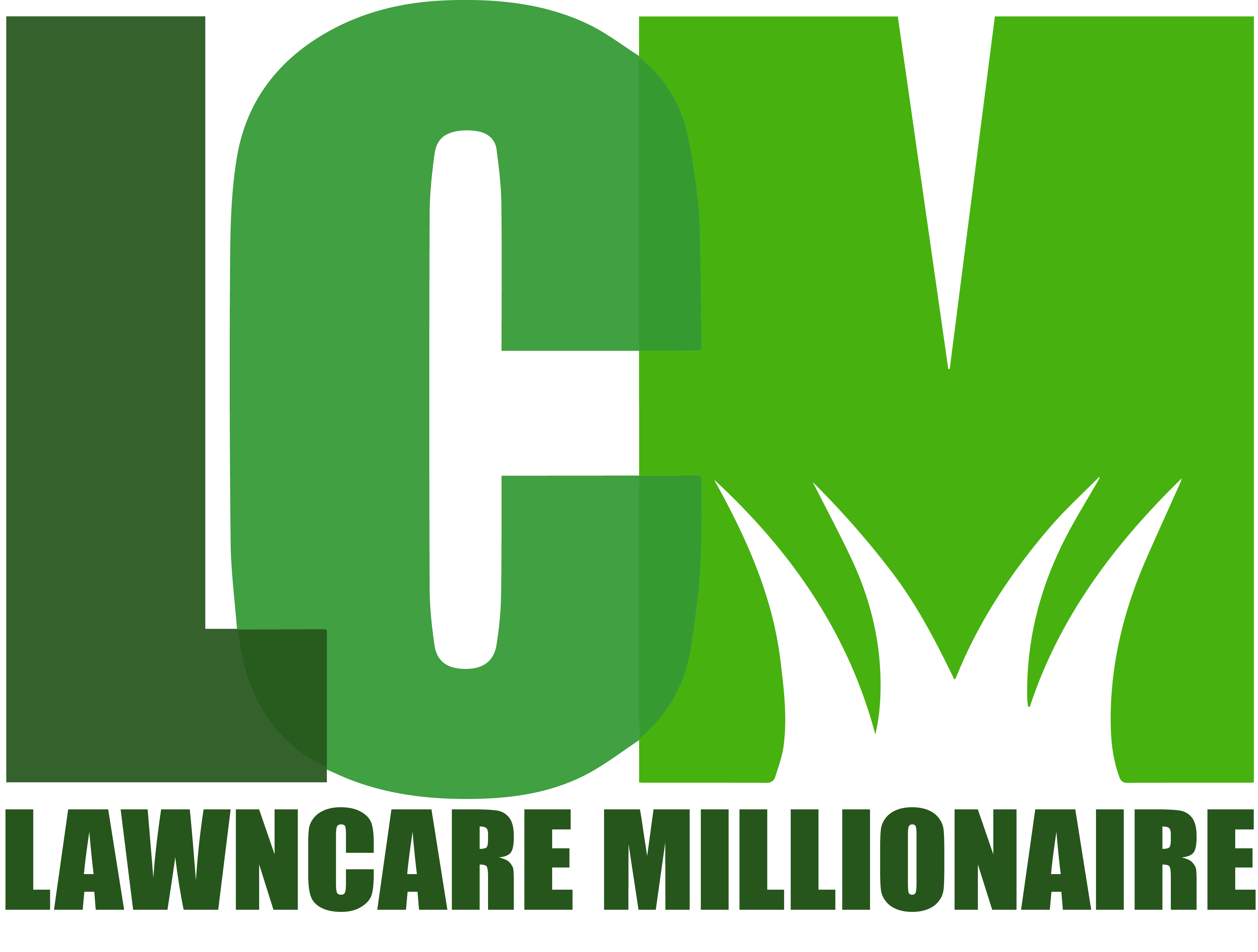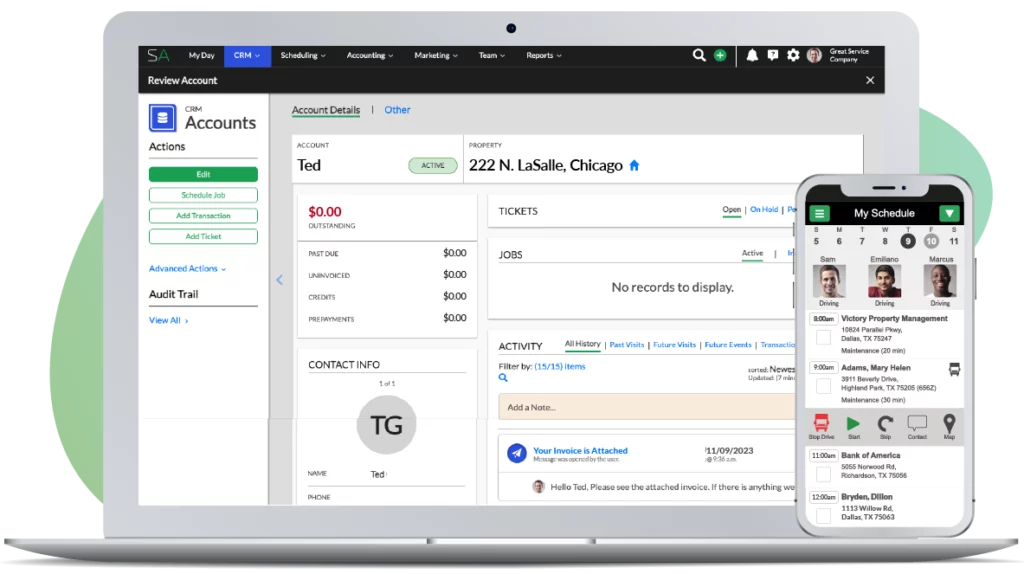Jonathan:
The question is, can you please explain what asset utilization is? It must be something I’ve mentioned in several of my videos, so it’s really quite simple. It’s the idea of … Well, there are several ways to think about it, but one would be it’s the idea of using an asset in lieu of labor. For example, I’ve got a big property. It’s 20,000 gross lots square feet or 20,000 turf square feet, whatever, and I could get out there and I could push mow it with 21-inch mowers.
I could use Home Depot $300 mowers but use a better asset, a better piece of equipment such as a 21-inch Toro or Honda self-propelled, I’m going to produce more work with less labor. Meaning, on the Home Depot mower, I’m going to have to pay somebody, that mower while cheaper, $400, is going to cost me more for the rest of my life in terms of labor because I’m paying somebody more time to mow the lawn. They’re less efficient than if I spent more to buy them a 21-inch Toro self-propelled. I’m talking about a commercial grade mower, and they can walk behind that mower at one, a faster pace. Two, they become less tired. From terms of productivity, how long they can work for the day, it’s faster so I’m using an asset, asset utilization to cut down labor.
Take that a step further, I could put them on a stand-up or stand behind or whatever you call it mower or I can put them on a rider like a 61-inch Skag or Turf Tiger or whatever and that is a much more expensive asset but I have much lower labor costs. I’m spending more on the asset which drives down my labor cost. My labor cost is the number one expense on my P and L. I want to focus on driving that down all the time. I can use equipment asset to drive down labor, my ongoing expense. That’s one form of asset utilization.
Another would be that I am starting out in the business. I’m predominantly doing residential. Most of my residential smaller stuff but then I have some big residential. The big residential requires that I do … That I put some big equipment on it. We’ll go back to my 61-inch riding piece of equipment. Or maybe I’m doing predominately residential and I’ve got some commercial accounts. The commercial accounts are the HOAs. They require a big piece of riding equipment. Asset utilization in this example would be that I have this $10,000 piece of equipment sitting on my trailer for … Let’s call it off a ten hour work day, I have it sitting on my trailer eight hours of the day.
I’ve got $10,000 of money tied up in an asset that’s sitting on a trailer for literally 80% of the time. It’s poor asset utilization. That’s because I haven’t sold enough commercial work. If I want to really use my money and my assets, put them to the best use possible, then I want that piece of equipment running near ten hours a day. I want it running all day, every day. I don’t want that $10,000 piece of equipment sitting on my truck.
Another example of asset utilization would be that, in our case, I don’t know how many crews we have but I think it’s in the 70 range. I don’t know the exact number but let’s say I have 70 crews and let’s say I’m running three-man crews right now as an example. It’s not all that. We got techs and they’re one man and a truck in some cases, a lot of three-man crews. Let me just give this example. Let’s say I have all three man crews and then I say, “You know what? We did a time study. Two man crews are more effective.” They almost always are. Two man crews are more effective. Well, if I have 70 and I don’t have 70 three man crews but let’s say I did and then I decide, “Okay, tomorrow we’re gonna have all two-man crews.” Now I’m gonna have about 110 crews. I don’t know the exact number. I didn’t do the math but you get the idea. It would immediately jump to what’s called 110 crews because now they’re only two-man crews.
Now I have to think about asset utilization. I gotta think about the expense of my business for this equipment. I’ve gotta things like opportunity costs of taking the money to buy all those other trucks and all that additional equipment to run two-man crews instead of three-man crews. There are opportunity costs and that money, I could’ve used that money for marketing, growth, hiring a better leadership team, things of that sort.
I’ve also got to consider things like the idea that now I have more safety risk. I’ve got 110 trucks on the road instead of 70 trucks on the road. There’s more risk, more accident potential, more everything. Those are intangibles that you think about and I put in quotes because they’re intangibles. You have to think through this stuff. You can’t perfectly picture it. Sometimes it’s kinda hard to measure it but it’s reality.
Back to asset utilization. That’s an example of asset utilization. I am utilizing my equipment, my assets more efficiently by putting three-man … Three men in a truck than two. It means I have to buy a lot fewer trucks, a lot less equipment but that doesn’t necessarily justify it because again, labor’s the number one expense. It’s the balance of the cost of assets, utilization of assets, a balance of labor expense, ongoing labor expense. You’ve gotta do the math and figure out where the sweet spot is and that tells you what equipment you buy and when you buy it versus the number of people you put on the problem, you put on the property, you put on the job, you put in the truck. Things of that sort.
I hope that clears it up.
Podcast: Play in new window | Download
Subscribe: RSS



